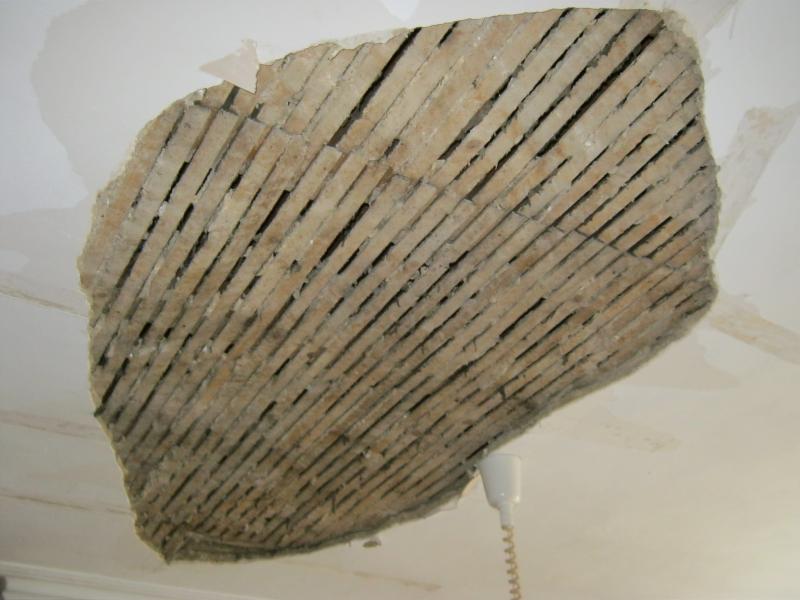Part of our ceiling collapsed on Tuesday morning.
As you can see from the picture it is an oval shape. It is about 2m long by 1m wide and 3/4" thick.
I have done a few minor repairs before using plasterboard, then used skim plaster to cover the surface, but have not attempted anything this big.
Q1) Should I cut the plasterboard to fit the oval shape or remove existing plaster from the ceiling so that I end up with a rectangular shape into which the plaster board would fit?
Q2) What is the best tool for cutting plasterboard?
Q3) What is the best tool for cutting the existing plaster to a depth of 3/4"?
Q4) What is the best plasterboard to use for a ceiling (we have a Wickes nearby) ?
Q5) Any other tips?
Many thanks,
Jimbo
As you can see from the picture it is an oval shape. It is about 2m long by 1m wide and 3/4" thick.
I have done a few minor repairs before using plasterboard, then used skim plaster to cover the surface, but have not attempted anything this big.
Q1) Should I cut the plasterboard to fit the oval shape or remove existing plaster from the ceiling so that I end up with a rectangular shape into which the plaster board would fit?
Q2) What is the best tool for cutting plasterboard?
Q3) What is the best tool for cutting the existing plaster to a depth of 3/4"?
Q4) What is the best plasterboard to use for a ceiling (we have a Wickes nearby) ?
Q5) Any other tips?
Many thanks,
Jimbo


